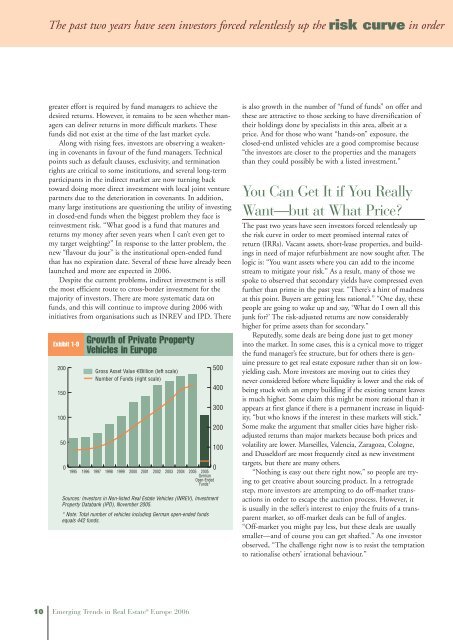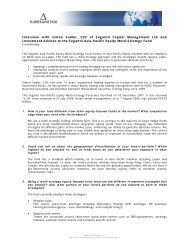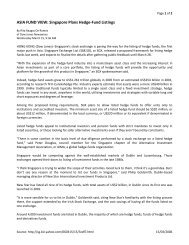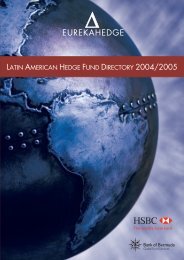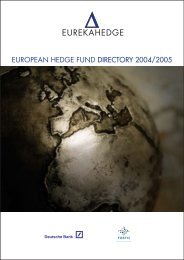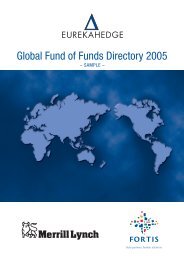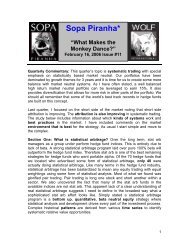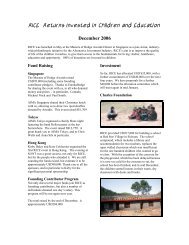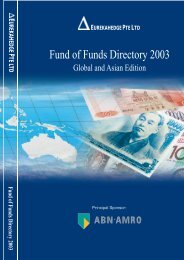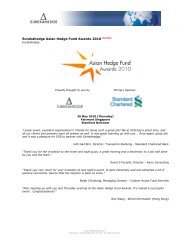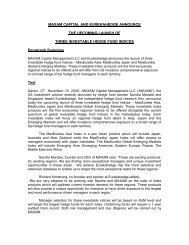Emerging Trends in Real Estate® Europe 2006 - Urban Land Institute
Emerging Trends in Real Estate® Europe 2006 - Urban Land Institute
Emerging Trends in Real Estate® Europe 2006 - Urban Land Institute
Create successful ePaper yourself
Turn your PDF publications into a flip-book with our unique Google optimized e-Paper software.
The past two years have seen <strong>in</strong>vestors forced relentlessly up the risk curve <strong>in</strong> order<br />
greater effort is required by fund managers to achieve the<br />
desired returns. However, it rema<strong>in</strong>s to be seen whether managers<br />
can deliver returns <strong>in</strong> more difficult markets. These<br />
funds did not exist at the time of the last market cycle.<br />
Along with ris<strong>in</strong>g fees, <strong>in</strong>vestors are observ<strong>in</strong>g a weaken<strong>in</strong>g<br />
<strong>in</strong> covenants <strong>in</strong> favour of the fund managers. Technical<br />
po<strong>in</strong>ts such as default clauses, exclusivity, and term<strong>in</strong>ation<br />
rights are critical to some <strong>in</strong>stitutions, and several long-term<br />
participants <strong>in</strong> the <strong>in</strong>direct market are now turn<strong>in</strong>g back<br />
toward do<strong>in</strong>g more direct <strong>in</strong>vestment with local jo<strong>in</strong>t venture<br />
partners due to the deterioration <strong>in</strong> covenants. In addition,<br />
many large <strong>in</strong>stitutions are question<strong>in</strong>g the utility of <strong>in</strong>vest<strong>in</strong>g<br />
<strong>in</strong> closed-end funds when the biggest problem they face is<br />
re<strong>in</strong>vestment risk. “What good is a fund that matures and<br />
returns my money after seven years when I can’t even get to<br />
my target weight<strong>in</strong>g?” In response to the latter problem, the<br />
new “flavour du jour” is the <strong>in</strong>stitutional open-ended fund<br />
that has no expiration date. Several of these have already been<br />
launched and more are expected <strong>in</strong> <strong>2006</strong>.<br />
Despite the current problems, <strong>in</strong>direct <strong>in</strong>vestment is still<br />
the most efficient route to cross-border <strong>in</strong>vestment for the<br />
majority of <strong>in</strong>vestors. There are more systematic data on<br />
funds, and this will cont<strong>in</strong>ue to improve dur<strong>in</strong>g <strong>2006</strong> with<br />
<strong>in</strong>itiatives from organisations such as INREV and IPD. There<br />
Exhibit 1-9<br />
200<br />
150<br />
100<br />
50<br />
0<br />
Growth of Private Property<br />
Vehicles <strong>in</strong> <strong>Europe</strong><br />
Gross Asset Value €Billion (left scale)<br />
Number of Funds (right scale)<br />
1995 1996 1997 1998 1999 2000 2001 2002 2003 2004 2005 2005<br />
German<br />
Open-Ended<br />
Funds*<br />
Sources: Investors <strong>in</strong> Non-listed <strong>Real</strong> Estate Vehicles (INREV), Investment<br />
Property Databank (IPD), November 2005.<br />
* Note: Total number of vehicles <strong>in</strong>clud<strong>in</strong>g German open-ended funds<br />
equals 442 funds.<br />
10 <strong>Emerg<strong>in</strong>g</strong> <strong>Trends</strong> <strong>in</strong> <strong>Real</strong> Estate ® <strong>Europe</strong> <strong>2006</strong><br />
500<br />
400<br />
300<br />
200<br />
100<br />
0<br />
is also growth <strong>in</strong> the number of “fund of funds” on offer and<br />
these are attractive to those seek<strong>in</strong>g to have diversification of<br />
their hold<strong>in</strong>gs done by specialists <strong>in</strong> this area, albeit at a<br />
price. And for those who want “hands-on” exposure, the<br />
closed-end unlisted vehicles are a good compromise because<br />
“the <strong>in</strong>vestors are closer to the properties and the managers<br />
than they could possibly be with a listed <strong>in</strong>vestment.”<br />
You Can Get It if You <strong>Real</strong>ly<br />
Want—but at What Price?<br />
The past two years have seen <strong>in</strong>vestors forced relentlessly up<br />
the risk curve <strong>in</strong> order to meet promised <strong>in</strong>ternal rates of<br />
return (IRRs). Vacant assets, short-lease properties, and build<strong>in</strong>gs<br />
<strong>in</strong> need of major refurbishment are now sought after. The<br />
logic is: “You want assets where you can add to the <strong>in</strong>come<br />
stream to mitigate your risk.” As a result, many of those we<br />
spoke to observed that secondary yields have compressed even<br />
further than prime <strong>in</strong> the past year. “There’s a h<strong>in</strong>t of madness<br />
at this po<strong>in</strong>t. Buyers are gett<strong>in</strong>g less rational.” “One day, these<br />
people are go<strong>in</strong>g to wake up and say, ‘What do I own all this<br />
junk for?’ The risk-adjusted returns are now considerably<br />
higher for prime assets than for secondary.”<br />
Reputedly, some deals are be<strong>in</strong>g done just to get money<br />
<strong>in</strong>to the market. In some cases, this is a cynical move to trigger<br />
the fund manager’s fee structure, but for others there is genu<strong>in</strong>e<br />
pressure to get real estate exposure rather than sit on lowyield<strong>in</strong>g<br />
cash. More <strong>in</strong>vestors are mov<strong>in</strong>g out to cities they<br />
never considered before where liquidity is lower and the risk of<br />
be<strong>in</strong>g stuck with an empty build<strong>in</strong>g if the exist<strong>in</strong>g tenant leaves<br />
is much higher. Some claim this might be more rational than it<br />
appears at first glance if there is a permanent <strong>in</strong>crease <strong>in</strong> liquidity,<br />
“but who knows if the <strong>in</strong>terest <strong>in</strong> these markets will stick.”<br />
Some make the argument that smaller cities have higher riskadjusted<br />
returns than major markets because both prices and<br />
volatility are lower. Marseilles, Valencia, Zaragoza, Cologne,<br />
and Dusseldorf are most frequently cited as new <strong>in</strong>vestment<br />
targets, but there are many others.<br />
“Noth<strong>in</strong>g is easy out there right now,” so people are try<strong>in</strong>g<br />
to get creative about sourc<strong>in</strong>g product. In a retrograde<br />
step, more <strong>in</strong>vestors are attempt<strong>in</strong>g to do off-market transactions<br />
<strong>in</strong> order to escape the auction process. However, it<br />
is usually <strong>in</strong> the seller’s <strong>in</strong>terest to enjoy the fruits of a transparent<br />
market, so off-market deals can be full of angles.<br />
“Off-market you might pay less, but these deals are usually<br />
smaller—and of course you can get shafted.” As one <strong>in</strong>vestor<br />
observed, “The challenge right now is to resist the temptation<br />
to rationalise others’ irrational behaviour.”


